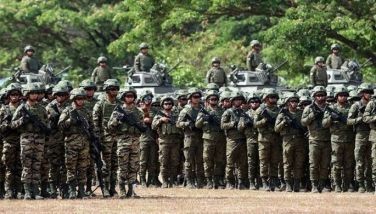Shell study cites 6 archetypes of energy use among cities
MANILA, Philippines - Power, energy and gas technology leader Shell, together with global consultants Booz & Co., studied more than 500 urban centers across the globe and gathered data on how cities have been utilizing energy. The results pointed to six illustrative archetypes indicating where energy use is most concentrated and where future urbanization is set to take place.
The findings, published in a report titled New Lenses on Future Cities, show energy use currently concentrated in two of the six city archetypes: sprawling metropolises like Rio de Janeiro and Tokyo, and prosperous communities such as Dubai and Stockholm. These cities have relatively low-density and high per capita GDP, and are typically found in the United States and Europe. Urban powerhouses, the third archetype characterized by high population densities and high individual incomes, are also heavy energy users. However, their share of global consumption is modest by comparison as only a few cities belong in this archetype, such as Hong Kong, Singapore, and New York.
Developing mega-hubs like Hyderabad and Chongqing, and underprivileged crowded cities such as Manila and Bangalore are relatively light energy users at present. But while these cities have low individual incomes and medium to high populations, most of them will join the next wave of urbanization as they become more prosperous. Their growing energy demand will shape global levels of energy use, making their development choices critical. Underdeveloped urban centers, the most common archetype, are low energy users — accounting for only 11 percent of total energy used in the cities studied.
“Despite the differences between cities, best practice does exist around urban development and how to manage it,” said Wim Thomas, Shell Chief Energy Advisor. “Compact, densely populated, well-planned cities with effective integrated infrastructure and services are more resource-efficient. With appropriate attention, they can also be attractive places to live.”
New Lenses on Future Cities is the first of a series of supplements that Shell will publish on urbanization and future energy. The supplement provides a future energy-based perspective for political and business leaders as they make decisions that affect city planning and development. To support the launch of the report, a Shell Future Cities interactive quiz was also rolled out. The quiz presents the core findings of the report in a digital format and is showcased at the World Cities Summit in Singapore, where the supplement was launched.
The supplement follows from the New Lens Scenarios which Shell published in March 2013. While Shell has been building and applying scenarios for more than 40 years, the New Lens Scenarios introduced a range of new analytical tools — so-called “lenses”—that help policy and other decision-makers recognise and interpret future energy issues. It also looked at a longer time frame than previous reports—through 2060 and beyond.
Rising energy intensity from a growing and more prosperous global population will have increasingly longer-term impact. “Careful planning would help achieve a more efficient, integrated use of resources,” added Thomas.
- Latest
- Trending































